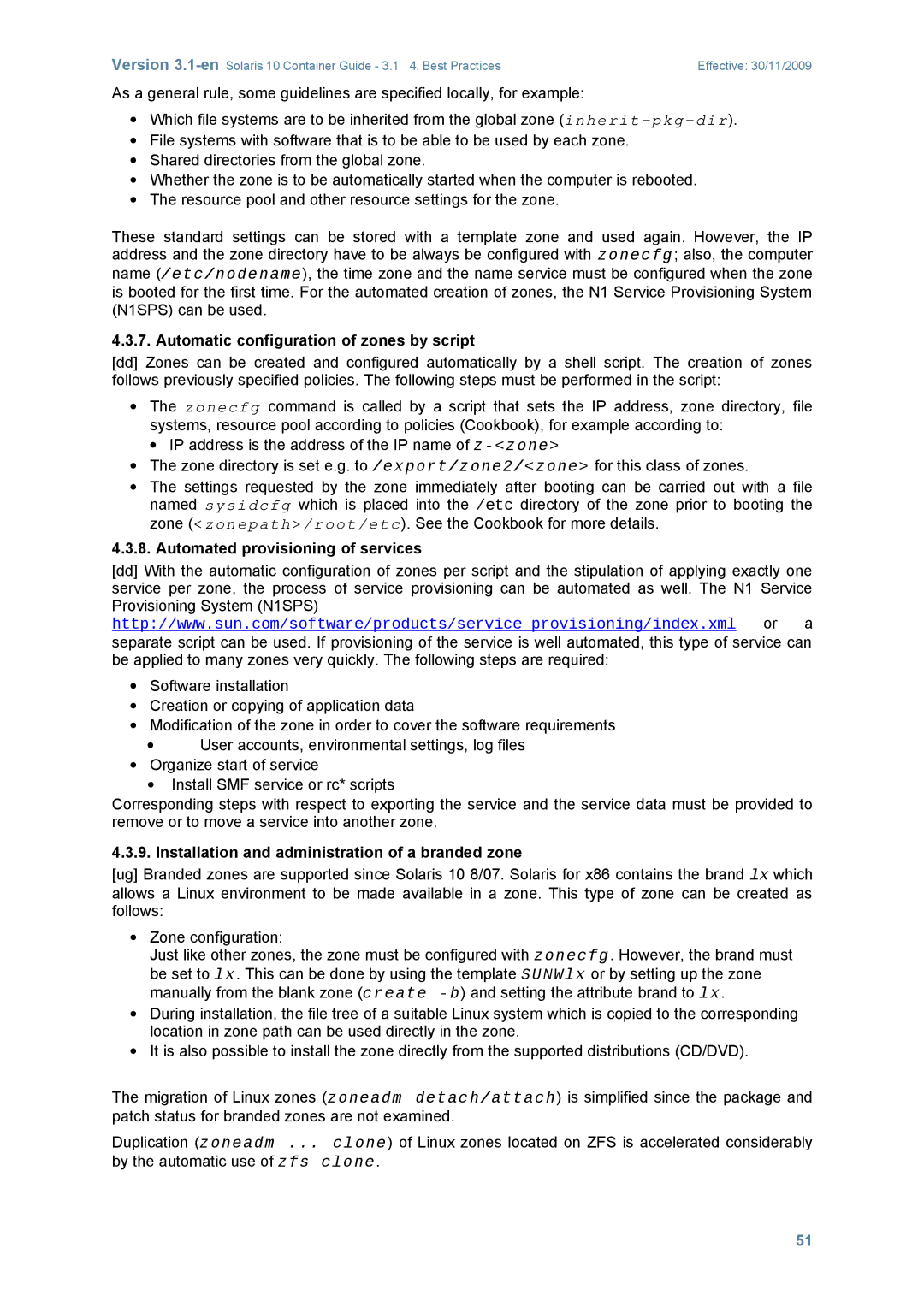Version | Effective: 30/11/2009 |
As a general rule, some guidelines are specified locally, for example:
∙Which file systems are to be inherited from the global zone
∙File systems with software that is to be able to be used by each zone.
∙Shared directories from the global zone.
∙Whether the zone is to be automatically started when the computer is rebooted.
∙The resource pool and other resource settings for the zone.
These standard settings can be stored with a template zone and used again. However, the IP address and the zone directory have to be always be configured with zonecfg; also, the computer name (/etc/nodename), the time zone and the name service must be configured when the zone is booted for the first time. For the automated creation of zones, the N1 Service Provisioning System (N1SPS) can be used.
4.3.7. Automatic configuration of zones by script
[dd]Zones can be created and configured automatically by a shell script. The creation of zones follows previously specified policies. The following steps must be performed in the script:
∙The zonecfg command is called by a script that sets the IP address, zone directory, file systems, resource pool according to policies (Cookbook), for example according to:
∙ IP address is the address of the IP name of
∙The zone directory is set e.g. to /export/zone2/<zone> for this class of zones.
∙The settings requested by the zone immediately after booting can be carried out with a file named sysidcfg which is placed into the /etc directory of the zone prior to booting the zone (<zonepath>/root/etc). See the Cookbook for more details.
4.3.8. Automated provisioning of services
[dd]With the automatic configuration of zones per script and the stipulation of applying exactly one service per zone, the process of service provisioning can be automated as well. The N1 Service Provisioning System (N1SPS) http://www.sun.com/software/products/service_provisioning/index.xml or a separate script can be used. If provisioning of the service is well automated, this type of service can be applied to many zones very quickly. The following steps are required:
∙Software installation
∙Creation or copying of application data
∙Modification of the zone in order to cover the software requirements
∙User accounts, environmental settings, log files
∙Organize start of service
∙Install SMF service or rc* scripts
Corresponding steps with respect to exporting the service and the service data must be provided to remove or to move a service into another zone.
4.3.9. Installation and administration of a branded zone
[ug] Branded zones are supported since Solaris 10 8/07. Solaris for x86 contains the brand lx which allows a Linux environment to be made available in a zone. This type of zone can be created as follows:
∙Zone configuration:
Just like other zones, the zone must be configured with zonecfg. However, the brand must be set to lx. This can be done by using the template SUNWlx or by setting up the zone
manually from the blank zone (create
∙During installation, the file tree of a suitable Linux system which is copied to the corresponding location in zone path can be used directly in the zone.
∙It is also possible to install the zone directly from the supported distributions (CD/DVD).
The migration of Linux zones (zoneadm detach/attach) is simplified since the package and patch status for branded zones are not examined.
Duplication (zoneadm ... clone) of Linux zones located on ZFS is accelerated considerably by the automatic use of zfs clone.
51
